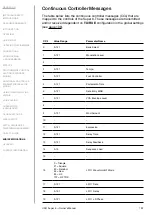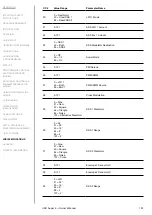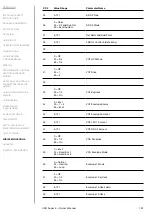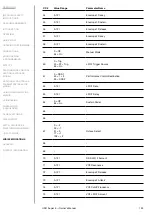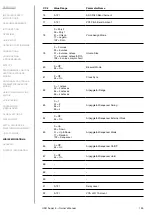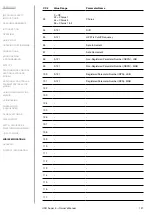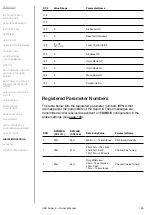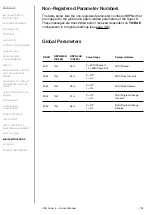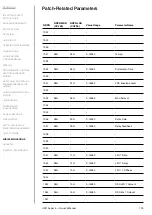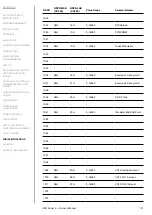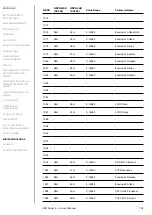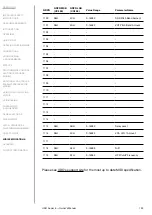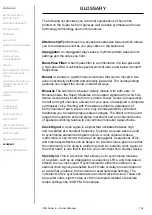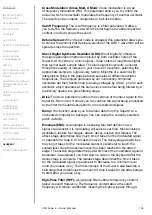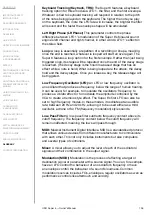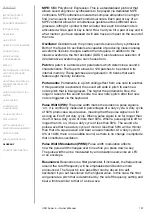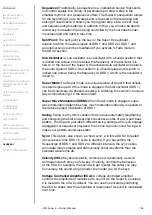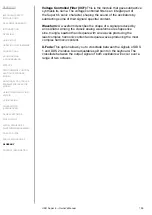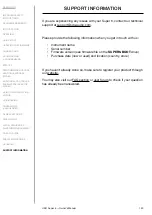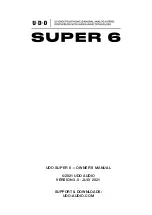
UDO Super 6 — Owner’s Manual
136
Keyboard Tracking (Keytrack, TRK):
The Super 6 features a keyboard
tracking option for three modules: LFO 1, the filter, and the first envelope.
Whatever is tied to keyboard tracking will respond in relation to the pitch
of the notes being played on the keyboard. The higher the note you play
on the keyboard, the more the LFO rate will increase, the brighter the filter
will sound and the faster the envelope shape will be articulated.
Left Right Phase (LR Phase):
This parameter controls the phase
difference between LFO 1’s modulation of the Super 6’s binaural sound
engine’s left channel and right channel, in other words: LFO 1’s effect on
the stereo field.
Loop:
A loop is essentially a repetition of a recording or shape, meaning
once the end is reached, whatever is looped will start all over again. The
Super 6 features a loop option for the first envelope. Rather than just being
triggered once, its stages will be repeated once the end of the decay stage
is reached. (The decay stage is the final time-based stage that has an
effect while a note is held.) What is being looped are the attack, the decay
hold and the decay stages. Once you release a key, the release stage will
be triggered.
Low Frequency Oscillator (LFO):
An LFO or low frequency oscillator is
an oscillator that produces a frequency below the range of human hearing.
It can be used, for example, to modulate the oscillators’ frequency to
produce a vibrato effect or to modulate the amplitude controlled by the
VCA to create a tremolo style effect. The Super 6’s first LFO can also be
set to high frequency modes. In these modes, it oscillates at an audible
rate; between 20 Hz and 20 kHz, allowing it to be used either as a third
oscillator, a drone or for FM (frequency modulation) style sounds.
Low-Pass Filter: A low-pass filter subtracts frequency content above its
cutoff frequency. The frequency content below the cutoff frequency will
remain unaffected, meaning the lows will pass through.
MIDI:
Musical Instrument Digital Interface. MIDI is a standardised protocol
that allows various devices from different manufacturers to communicate
with each other. This not only includes instruments but also computers
and several types of controllers.
Mixer:
A mixer allows you to adjust the level of each of the oscillators’
signals and their combination in the output signal.
Modulation (MOD): Modulation is the process of affecting a target or
destination signal or parameter with a source signal. You can, for example,
have an LFO control the behaviour of an oscillator’s frequency or have
an envelope control the behaviour of a sound’s loudness. Common
modulation sources include LFOs, envelopes, regular oscillators as well as
performance controls like aftertouch and velocity.
Summary of Contents for SUPER 6
Page 142: ......

